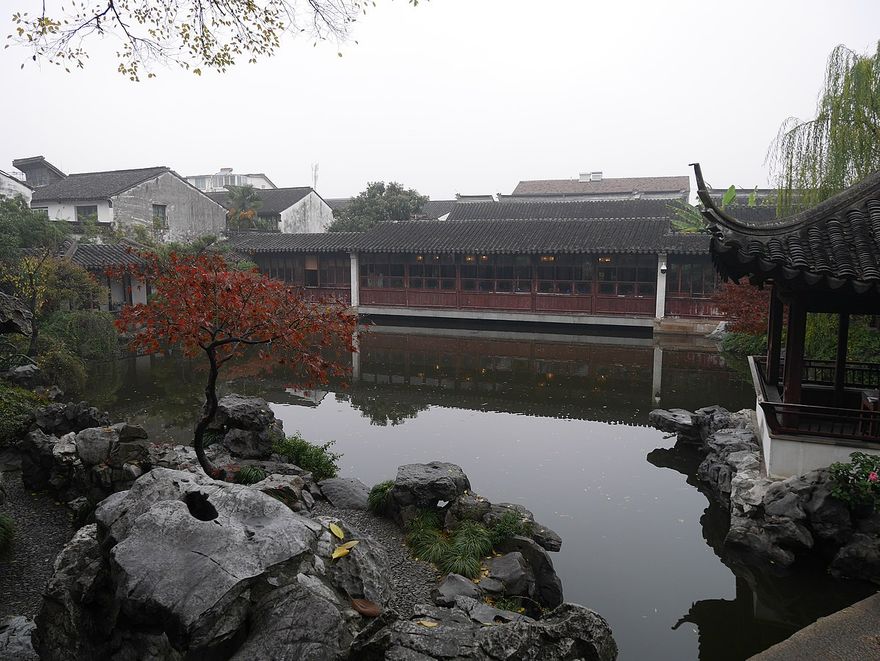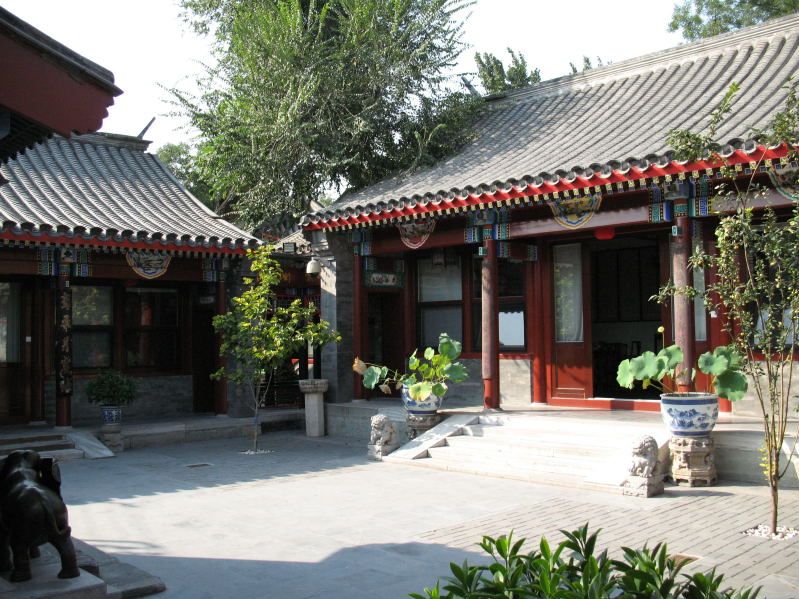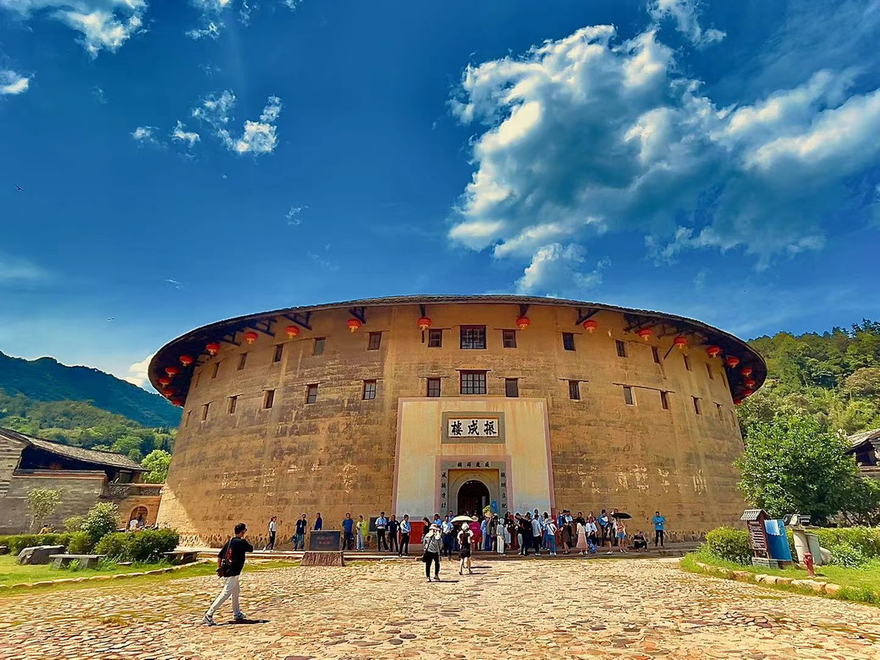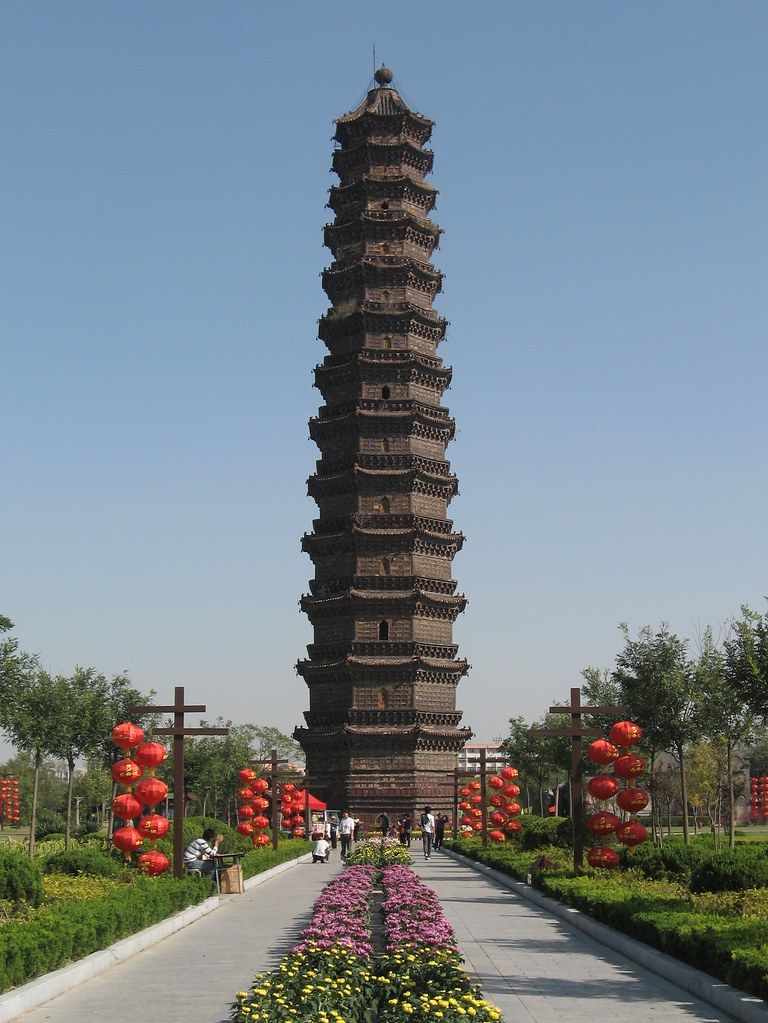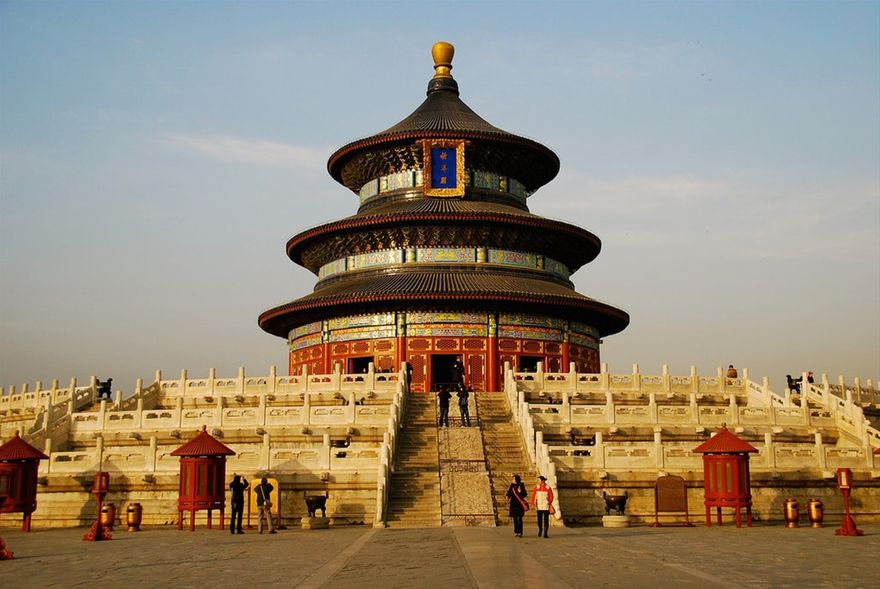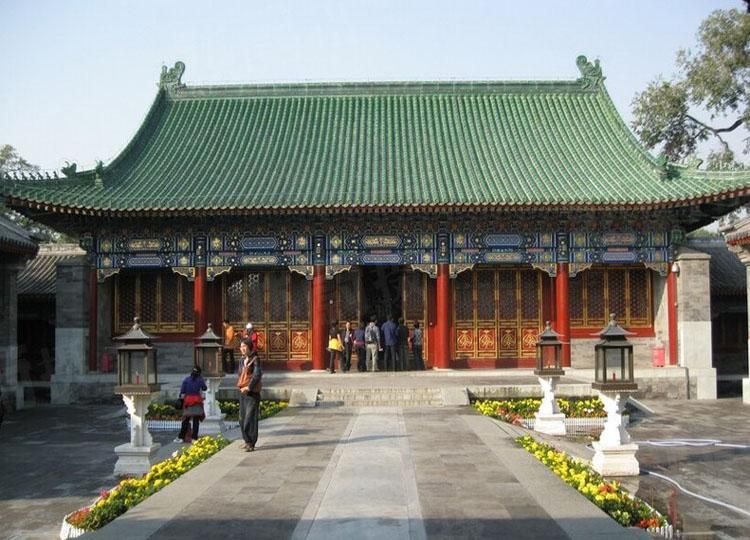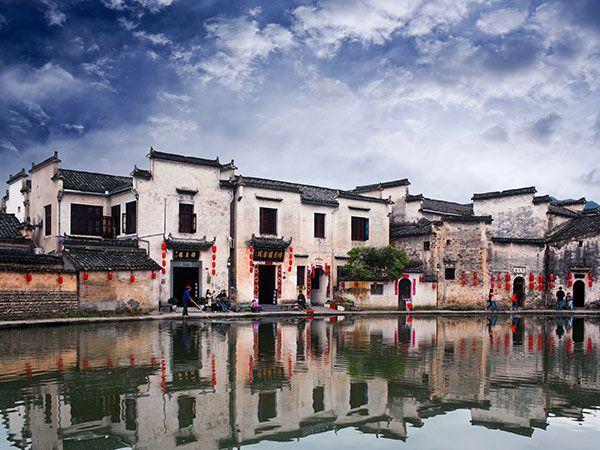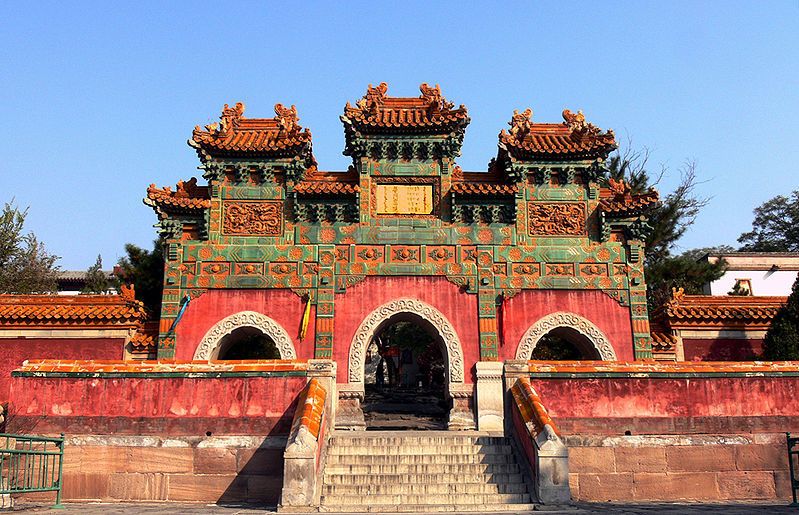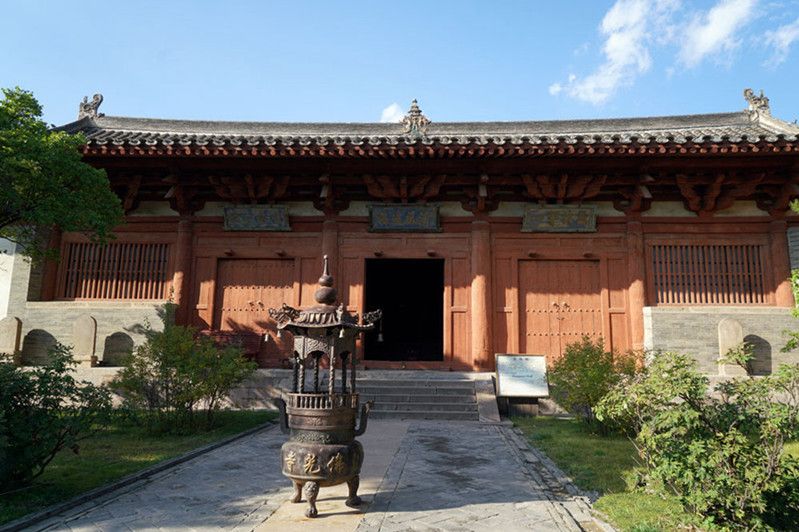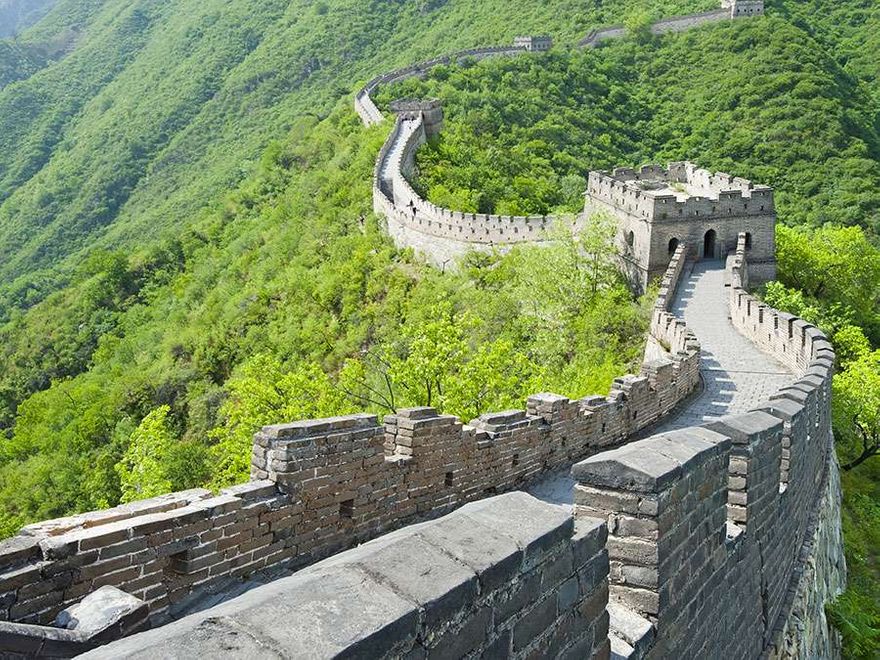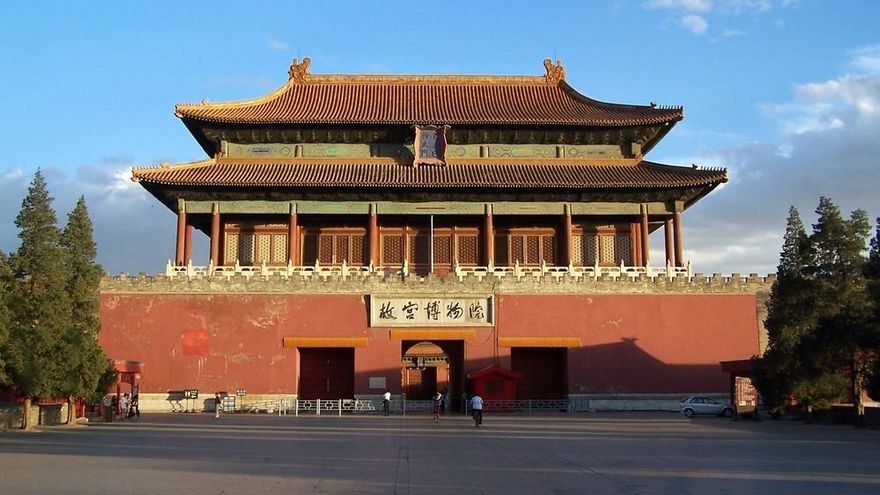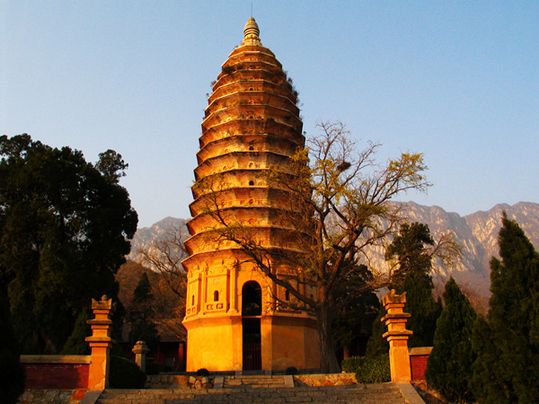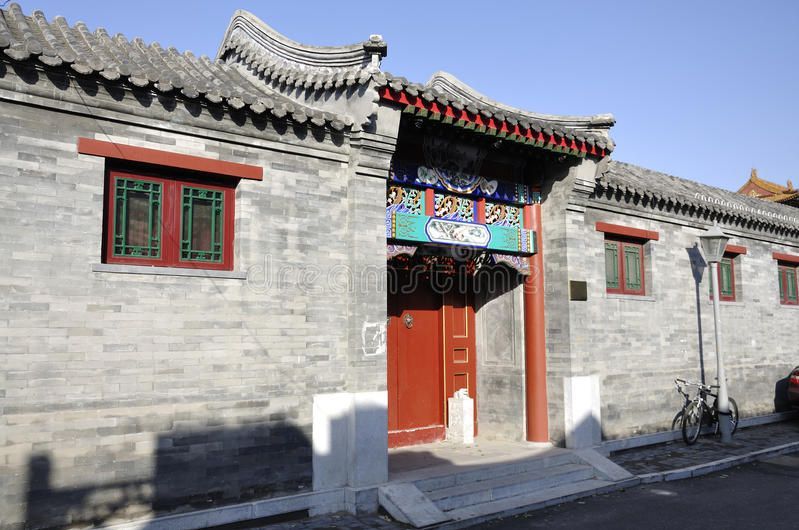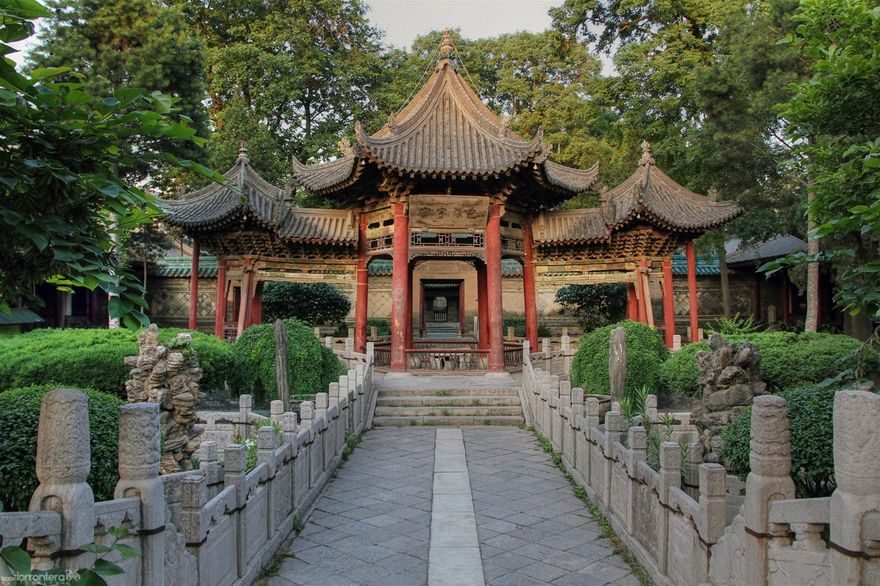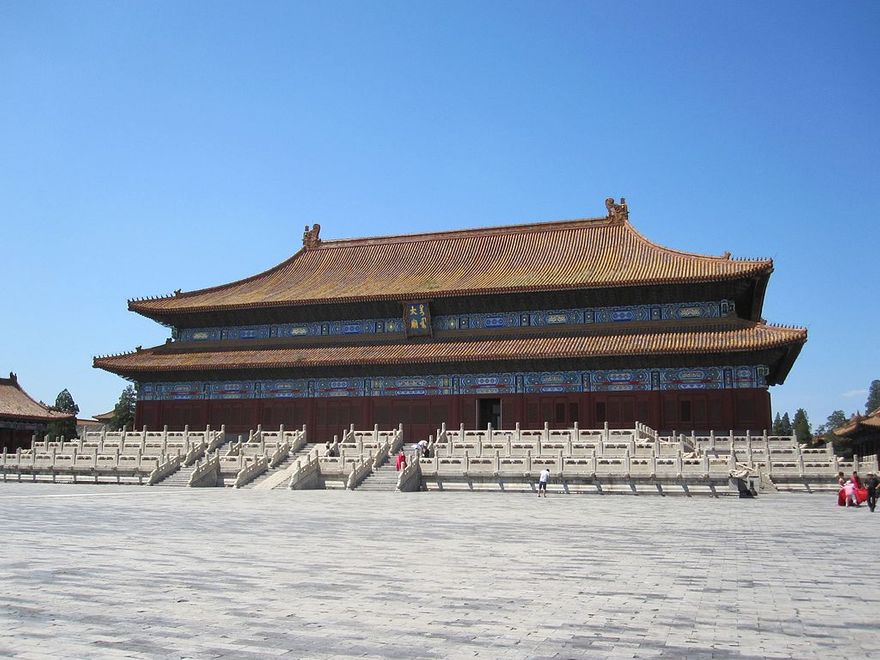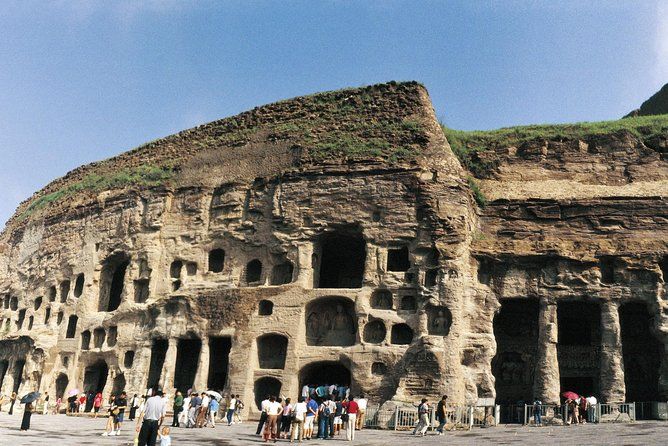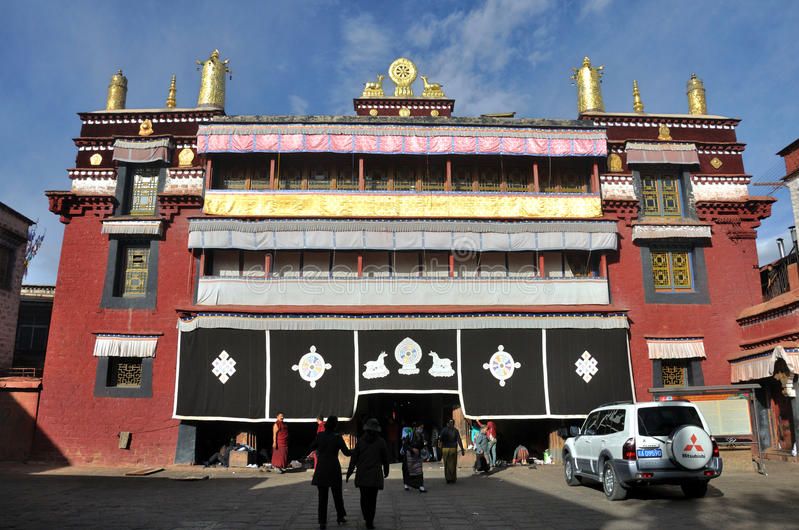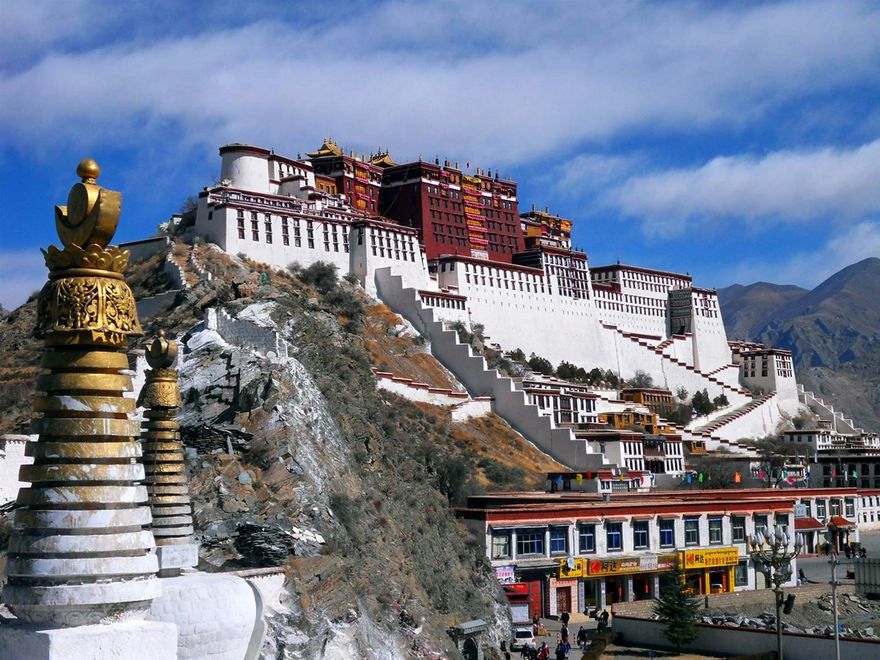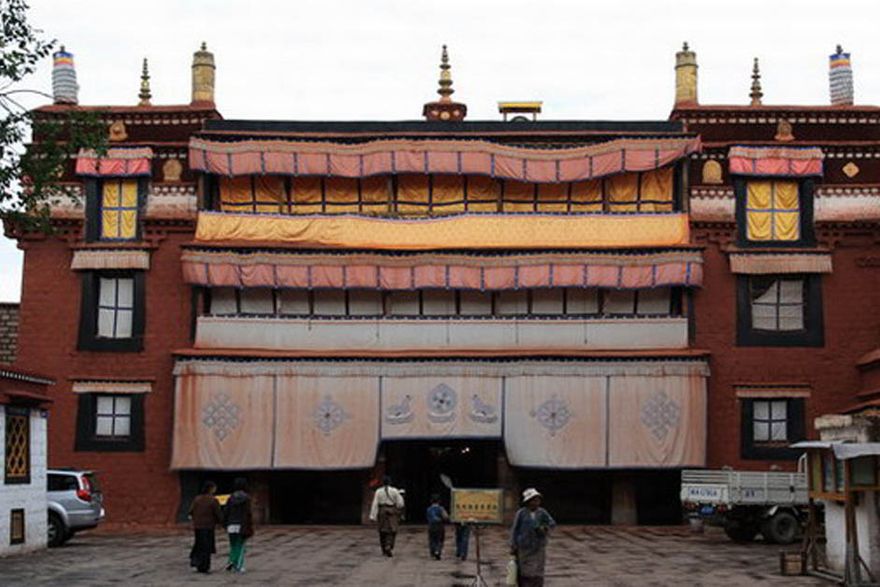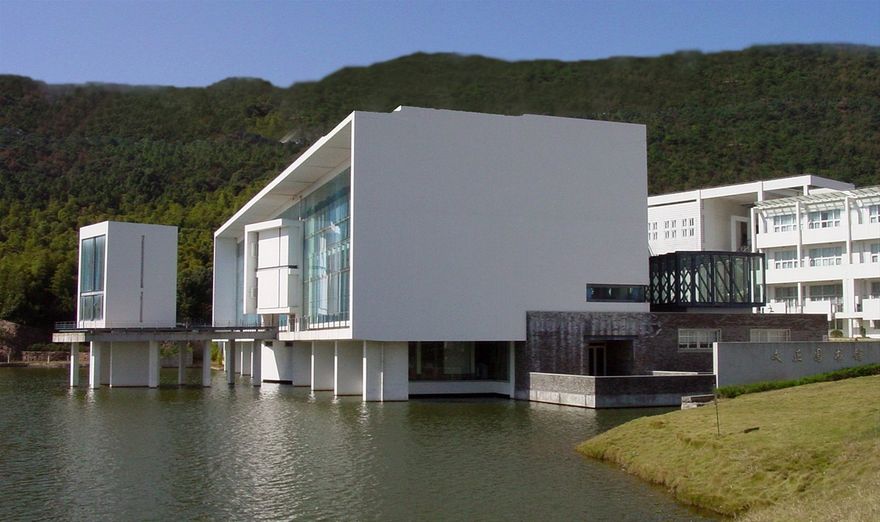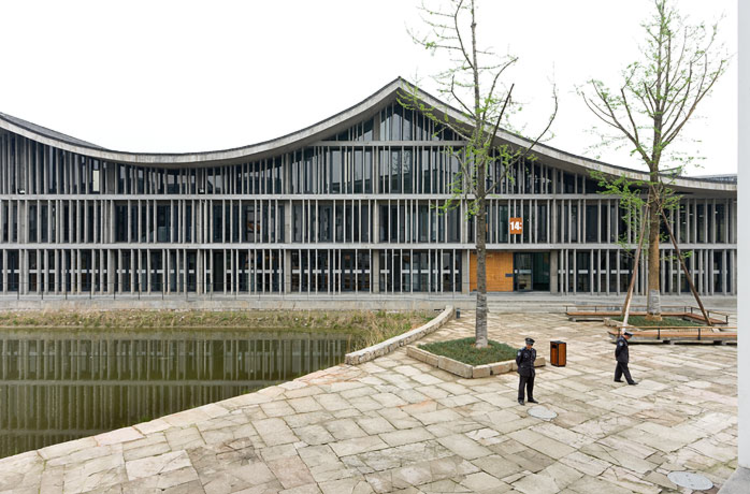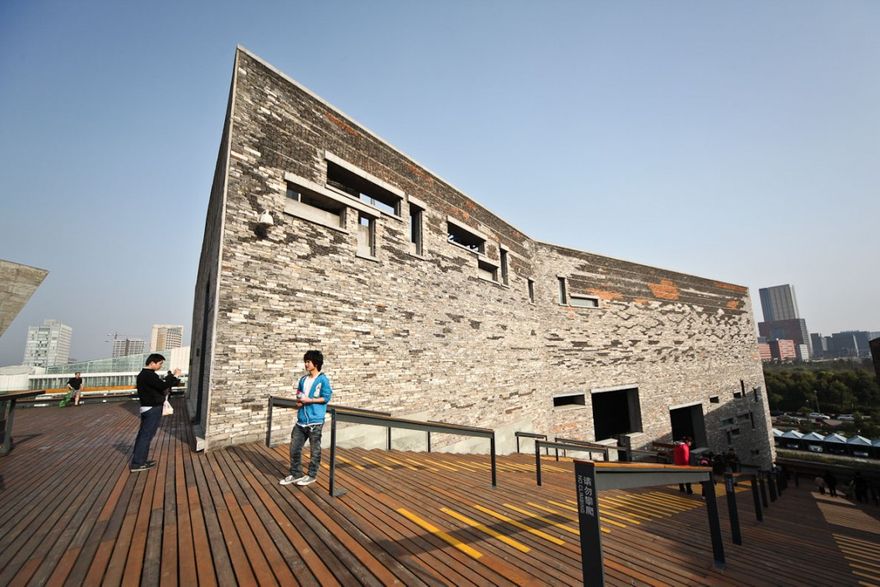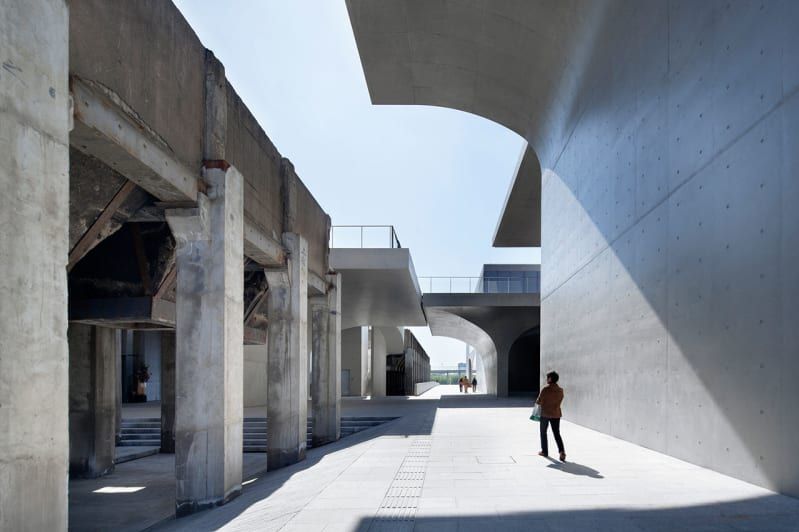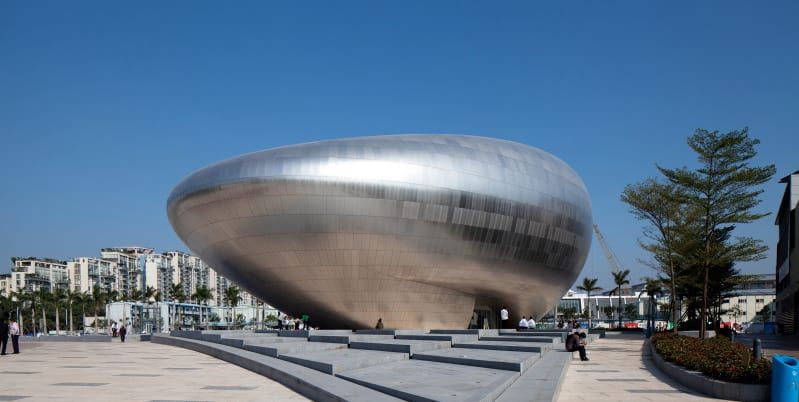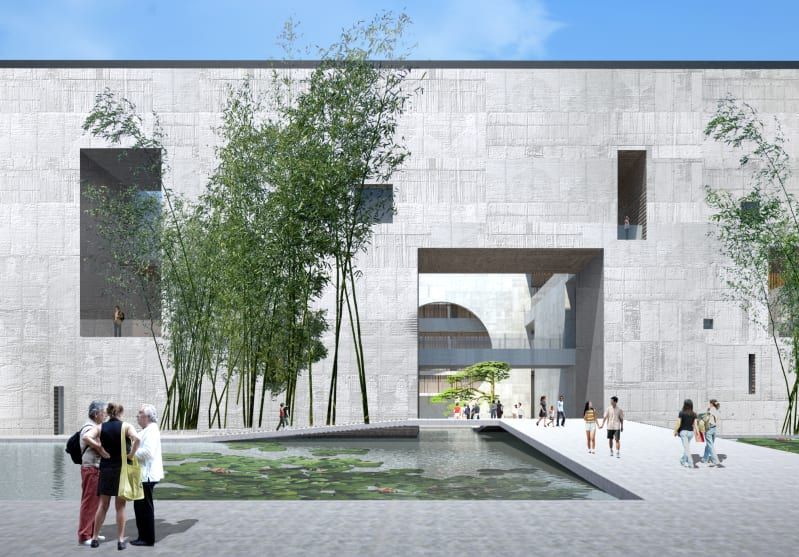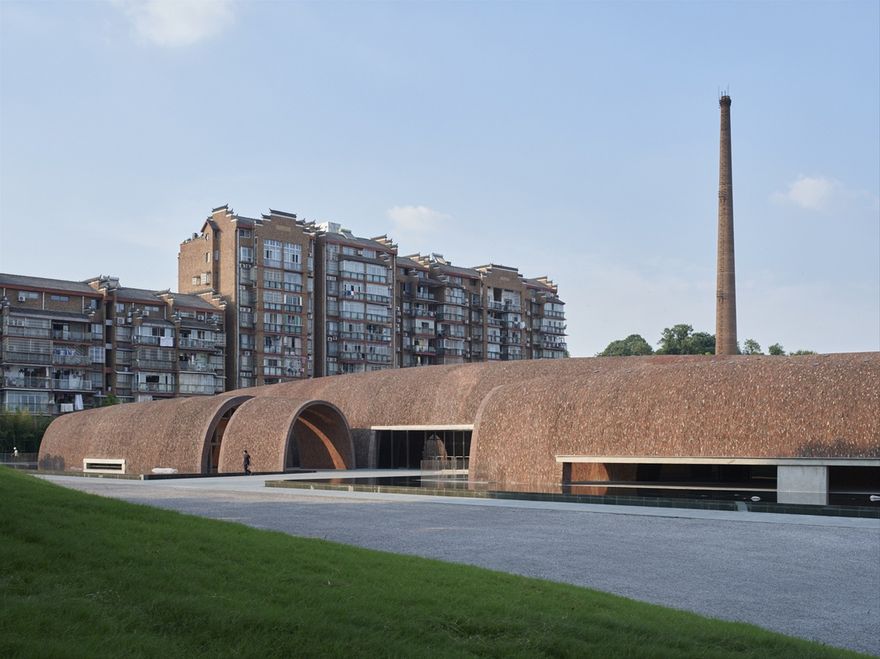Tesdorf Designs
Welcome to Architectural Information
CHINESE ARCHITECTURAL PERIODS
A RESOURCE FOR THE STUDY OF THE HISTORY AND THEORY OF ARCHITECTURE IN CHINA
CHINESE ARCHITECTURE
Chinese architecture demonstrates an architectural style that developed over millennia in China, before spreading out to influence architecture throughout East Asia. Since the solidification of the style in the early imperial period, the structural principles of Chinese architecture have remained largely unchanged, the main changes being only the decorative details. Starting with the Tang dynasty, Chinese architecture has had a major influence on the architectural styles of Japan, Korea, Mongolia, and Vietnam, and a lesser amount of influence on the architectural styles of Southeast and South Asia including Malaysia, Singapore, Indonesia, Sri Lanka, Thailand, Laos, Cambodia, and The Philippines. Chinese architecture is typified by various features; such as bilateral symmetry, use of enclosed open spaces, the incorporation of ideas related to feng shui such as directional hierarchies, a horizontal emphasis, and allusion to various cosmological, mythological, or other symbolism. Chinese architecture traditionally classifies structures according to type, ranging from pagodas to palaces. In part because of an emphasis on the use of wood, a relatively perishable material, and due to a de-emphasis on major monumental structures built of less-organic but more durable materials, much of the historical knowledge of Chinese architecture derives from surviving miniature models in ceramic and published planning diagrams and specifications.
Some of the architecture of China shows the influence of other types or styles from outside of China, such as the influences on mosque structures originating in the Middle East. Although displaying certain unifying aspects, rather than being completely homogeneous, Chinese architecture has many types of variation based on status or affiliation, such as dependence on whether the structures were constructed for emperors, commoners, or used for religious purposes. Other variations in Chinese architecture are shown in the varying styles associated with different geographic regions and in ethnic architectural design.
The architecture of China is as old as Chinese civilization. From every source of information—literary, graphic, exemplary—there is strong evidence testifying to the fact that the Chinese have always enjoyed an indigenous system of construction that has retained its principal characteristics from prehistoric times to the present day. Over the vast area from Chinese Turkistan to Japan, from Manchuria to the northern half of French Indochina, the same system of construction is prevalent; and this was the area of Chinese cultural influence. That this system of construction could perpetuate itself for more than four thousand years over such a vast territory and still remain a living architecture, retaining its principal characteristics in spite of repeated foreign invasions—military, intellectual, and spiritual—is a phenomenon comparable only to the continuity of the civilization of which it is an integral part. — Liang Sicheng, 1984
Throughout the 20th century, Chinese architects have attempted to combine traditional Chinese designs into modern architecture (usually government), with great success. Moreover, the pressure for urban development throughout contemporary China required higher speed of construction and higher floor area ratio, which means that in the great cities the demand for traditional Chinese buildings, which are normally less than 3 levels, has declined in favor of modern architecture. However, the traditional skills of Chinese architecture, including major and minor carpentry, masonry, and stonemasonry, are still applied to the construction of vernacular architecture in the vast rural area in China.
NEOLITHIC AND EARLY ANTIQUITY
Chinese civilizational cultures developed in the plains along the numerous rivers that emptied into the Bohai and Hongzhow bays. The most prominent of these rivers, the Yellow and the Yangtze, hosted a complex fabric of villages. The climate was warmer and more humid than today, allowing for millet to be grown in the north and rice in the south. There was, however, no single "origin" of the Chinese civilization. Instead, there was a gradual multinuclear development between the years 4000 and 2000 B.C. from village communities to what anthropologists call cultures to small but well-organized states.
Two the more important cultures were the Hongshan culture (4700–2900 B.C.) to the north of Bohai Bay in Inner Mongolia and Hebei Province and the contemporaneous Yangshao culture (5000–3000 B.C.) in Henan Province. Between the 2, and developing later, was the Longshan culture (3000–2000 B.C.) in the central and lower Yellow River valley. These combined areas gave rise to thousands of small states and proto-states by 3000 B.C. Some continued to share a common ritual center that linked the communities to a single symbolic order, but others developed along more independent lines. All was not peaceful, and the emergence of walled cities during this time is a clear indication that the political landscape was very much in flux.
The Hongshan culture of Inner Mongolia (located along the Laoha, Yingjin, and Daling rivers that empty into Bohai Bay) was scattered over a large area but had a single, common ritual center that consisted of at least 14 burial mounds and altars over several hill ridges. It dates from around 3500 BC but could have been founded ever earlier. Although there is no evidence of village settlements nearby, its size is much larger than one clan or village could support. In other words, though rituals would have been performed here for the elites, the large area implies that audiences for the ritual would have encompassed all the villages of the Hongshan. As a sacred landscape, the center might also have attracted supplicants from even further afield.
Garden of Cutivation at Suzhou
Traditional Shichahai Courtyard House at Beijing
ARCHITECTURAL BILATERAL SYMMETRY
A very important feature in Chinese architecture is its emphasis on articulation and bilateral symmetry, which signifies balance. Bilateral symmetry and the articulation of buildings are found everywhere in Chinese architecture, from palace complexes to humble farmhouses. When possible, plans for renovation and extension of a house will often try to maintain this symmetry provided that there is enough capital to do so. Secondary elements are positioned on either side of the main structures as two wings to maintain overall bilateral symmetry. The buildings are typically planned to contain an even number of columns in a structure to produce an odd number of bays (間). With the inclusion of the main door to a building in the center bay, symmetry is maintained.
In contrast to the buildings, the Chinese gardens tend to be asymmetrical. The principle underlying the garden's composition is to create enduring flow. The design of the classic Chinese garden is based on the ideology of "Nature and Man in One", as opposed to the home itself, which is a symbol of the human sphere co-existing with, but separate from nature. So, the arrangement is as flexible as possible to let people feel they are surrounded by and in harmony with nature. The two essential elements of the garden are hill stones and water. The hill stones mean the pursuit of immortality and water represents emptiness and existence. The mountain belongs to yang (static beauty) and the water belongs to yin (dynamic wonder). They depend on each other and complete the whole nature.
ENCLOSURE
In much of traditional Chinese architecture, buildings or building complexes take up an entire property but enclose open spaces within themselves. These enclosed spaces come in two forms:
Courtyard (院): The use of open courtyards is a common feature in many types of Chinese architectures. This is best exemplified in the Siheyuan, which has consisted of an empty space surrounded by buildings connected with one another either directly or through verandas.
"Sky well" (天井): Although large open courtyards are less commonly found in southern Chinese architecture, the concept of an "open space" surrounded by buildings, which is seen in northern courtyard complexes, can be seen in the southern building structure known as the "sky well". This structure is essentially a relatively enclosed courtyard formed from the intersections of closely spaced buildings and offers a small opening to the sky through the roof space from the floor up.
These enclosures serve in temperature regulation and in venting the building complexes. Northern courtyards are typically open and facing the south to allow the maximum exposure of the building windows and walls to the sun while keeping the cold northern winds out. Southern sky wells are relatively small and serve to collect rainwater from the rooftops. They perform the same duties as the Roman impluvium while restricting the amount of sunlight that enters the building. Sky wells also serve as vents for rising hot air, which draws cool air from the lower stories of the house and allows for the exchange of cool air with the outside.
HIERARCHY
The projected hierarchy and importance and uses of buildings in traditional Chinese architecture are based on the strict placement of buildings in a property/complex. Buildings with doors facing the front of the property are considered more important than those facing the sides. Buildings facing away from the front of the property are the least important.
South-facing buildings in the rear and more private locations of the property with higher exposure to sunlight are held in higher esteem and reserved for elder members of the family or ancestral plaques. Buildings facing east and west are generally for junior members or branches of the family, while buildings near the front are typically for servants and hired help.
Front-facing buildings in the back of properties are used particularly for rooms of celebratory rites and for the placement of ancestral halls and plaques. In multiple courtyard complexes, central courtyards and their buildings are considered more important than peripheral ones, the latter typically being used as storage or servants’ rooms or kitchens.
HORIZONTAL EMPHASIS
Classical Chinese buildings, especially those of the wealthy, are built with an emphasis on breadth and less on height, featuring an enclosed heavy platform and a large roof that floats over this base, with the vertical walls not well emphasized. Buildings that were too high and large were considered unsightly, and therefore generally avoided. Chinese architecture stresses the visual impact of the width of the buildings, using sheer scale to inspire awe in visitors. This preference contrasts Western architecture, which tends to grow in height and depth. This often meant that pagodas towered above all other buildings in the skyline of a Chinese city.
The halls and palaces in the Forbidden City, have rather low ceilings when compared to equivalent stately buildings in the West, but their external appearances suggest the all-embracing nature of imperial China. These ideas have found their way into modern Western architecture, for example through the work of Jørn Utzon.
COSMOLOGICAL CONCEPTS
Chinese architecture from early times used concepts from Chinese cosmology such as feng shui (geomancy) and Taoism to organize construction and layout from common residences to imperial and religious structures. This includes the use of the following.
1 Screen walls to face the main entrance of the house, which stems from the belief that evil things travel in straight lines.
2 Talismans and imagery of good fortune:
3 Door gods displayed on doorways to ward off evil and encourage the flow of good fortune
4 Three anthropomorphic figures representing Fu Lu Shou (福祿壽 fú-lù-shòu) stars are prominently displayed, sometimes with the proclamation "the three stars are present" (三星宅 sān-xīng-zhài)
5 Animals and fruits that symbolize good fortune and prosperity, such as bats and pomegranates, respectively. The association is often done through rebuses.
6 Orienting the structure with its back to elevated landscape and ensuring that there is water in the front. Considerations are also made such that the generally windowless back of the structure faces the north, where the wind is coldest in the winter.
7 Ponds, pools, wells, and other water sources are usually built into the structure.
8 Aligning a building along a north/south axis, with the building facing south and the two sides facing east and west respectively.
The use of certain colors, numbers, and cardinal directions in traditional Chinese architecture reflected the belief in a type of immanence, where the nature of a thing could be wholly contained in its own form. Beijing and Chang'an are examples of traditional Chinese town planning that represents these cosmological concepts.
ARCHITECTURAL TYPES
There are various types of Chinese architecture. Some of these relate to the associated use of the structures, such as whether they were built for royals, commoners, or the religious.
COMMONERS TYPES
Due to the primarily wooden construction and poor maintenance, far fewer examples of commoner's homes survive to this day compared to those of nobles. According to Matthew Korman, the average commoner's home did not change much, even centuries after the establishment of the universal style, such as early-20th-Century Homes, were very similar to late and mid imperial homes in layout and construction.
These homes, be they those of bureaucrats, merchants or farmers, tended to follow a set pattern: the center of the building would be a shrine for the deities and the ancestors, which would also be used during festivities. On its two sides were bedrooms for the elders; the two wings of the building (known as "guardian dragons" by the Chinese) were for the junior members of the family, as well as the living room, the dining room, and the kitchen, although sometimes the living room could be very close to the center.
Sometimes the extended families became so large that one or even two extra pairs of "wings" had to be built. This resulted in a U-shaped building, with a courtyard suitable for farm work.[16] Merchants and bureaucrats, however, preferred to close off the front with an imposing front gate. All buildings were legally regulated, and the law held that the number of stories, the length of the building, and the colours used depended on the owner's class.
Some commoners living in areas plagued by bandits built communal fortresses called Tulou for protection. Often favoured by the Hakka in Fujian and Jiangxi, the design of Tulou also shows the Chinese ancient philosophy of harmony between people and the environment. People used local materials to build the walls with rammed earth. There is no window to the outside on the lower two floors for defense, but it's open on the inside with a common courtyard and lets people get together easily.
Fujian Hakka Tulou, Earth Tower from Fujian
Iron Pagoda at Kaifeng
Temple of Heaven at Beijing built 1406-1420
Prince Gong's Mansion in Xicheng District, Beijing 1777 A.D.
IMPERIAL TYPES
There were certain architectural features that were reserved solely for buildings built for the Emperor of China. One example is the use of yellow roof tiles, yellow having been the Imperial color; yellow roof tiles still adorn most of the buildings within the Forbidden City. The Temple of Heaven, however, uses blue roof tiles to symbolize the sky. The roofs are almost invariably supported by brackets ("dougong"), a feature shared only with the largest of religious buildings. The wooden columns of the buildings, as well as the surfaces of the walls, tend to be red in color. Black is also a famous color often used in pagodas. It was believed that the gods are inspired by the black color to descend to the earth.
The Chinese 5-clawed dragon, adopted by the first Ming emperor for his personal use, was used as decoration on the beams, pillars, and on doors on Imperial architecture. Curiously, the dragon was never used on roofs of imperial buildings.
Only the buildings used by the imperial family were allowed to have nine jian (間, space between two columns); only the gates used by the Emperor could have five arches, with the centre one, of course, is reserved for the Emperor himself. The ancient Chinese favored the color red. The buildings faced south because the north had a cold wind.
Beijing became the capital of China after the Mongol invasion of the 13th century, completing the easterly migration of the Chinese capital begun since the Jin dynasty. The Ming uprising in 1368 reasserted Chinese authority and fixed Beijing as the seat of imperial power for the next five centuries. The Emperor and the Empress lived in palaces on the central axis of the Forbidden City, the Crown Prince at the eastern side, and the concubines at the back (therefore the numerous imperial concubines were often referred to as "The Back Palace Three Thousand"). However, during the mid-Qing dynasty, the Emperor's residence was moved to the western side of the complex. It is misleading to speak of an axis in the Western sense of visual perspective ordering facades, rather the Chinese axis is a line of privilege, usually built upon, regulating access—there are no vistas, but a series of gates and pavilions.
Numerology heavily influenced Imperial Architecture, hence the use of nine in much of construction (nine being the greatest single-digit number) and the reason why the Forbidden City in Beijing is said to have 9,999.9 rooms—just short of the mythical 10,000 rooms in heaven. The importance of the East (the direction of the rising sun) in orienting and siting Imperial buildings is a form of solar worship found in many ancient cultures, where there is the notion of Ruler being affiliated with the Sun.
The tombs and mausoleums of imperial family members, such as the 8th-century Tang dynasty tombs at the Qianling Mausoleum, can also be counted as part of the imperial tradition in architecture. These above-ground earthen mounds and pyramids had subterranean shaft-and-vault structures that were lined with brick walls since at least the Warring States period (481–221 B.C.).
RELIGIOUS
Generally speaking, Buddhist architecture follows the imperial style. A large Buddhist monastery normally has a front hall, housing the statues of the Four Heavenly Kings, followed by a great hall, housing the statues of the Buddhas. Accommodations for the monks and the nuns are located on the two sides. Some of the greatest examples of this come from the 18th-century A.D. Puning Temple and Putuo Zongcheng Temple. Buddhist monasteries sometimes also have pagodas, which may house the relics of the Gautama Buddha; older pagodas tend to be four-sided, while later pagodas usually have eight sides.
Daoist architecture, on the other hand, usually follows the commoners' style. The main entrance is, however, usually at the side, out of superstition about demons that might try to enter the premise (see feng shui.) In contrast to the Buddhists, in a Daoist temple, the main deity is located in the main hall at the front, the lesser deities in the back hall and at the sides. This is because Chinese people believe that even after the body has died, the soul is still alive. From the Han grave design, it shows the forces of cosmic yin and yang, the two forces from heaven and earth that create eternity.
The tallest pre-modern building in China was built for both religious and martial purposes. The Liaodi Pagoda of 1055 A.D. stands at a height of 84 m (276 ft), and although it served as the crowning pagoda of the Kaiyuan monastery in old Dingzhou, Hebei, it was also used as a military watchtower for Song dynasty soldiers to observe potential Liao dynasty enemy movements.
The architecture of the mosques and gongbei tomb shrines of China's Muslims often combines traditional Chinese styles with Middle Eastern influences.
URBAN PLANNING
Chinese urban planning is based on fengshui geomancy and the well-field system of land division, both used since the Neolithic age. The basic well-field diagram is overlaid with the luoshu, a magic square divided into 9 sub-squares, and linked with Chinese numerology. In the Southern Song dynasty (1131A.D.). the design of Hongcun city in Anhui was based around "harmony between man and nature", facing south and surrounded by mountains and water. According to the theory of the traditional Chinese fengshui geomancy, it is a carefully planned ancient village and shows the Human-Nature Intergraded Ecological Planning concept.
Since wars happened in northern China very often, people moved to southern China. The building method of a courtyard house was adapted to southern China. The village of Tungyuan in Fujian Province is a good example of a planned settlement that shows the Chinese feng shui elements of psychological self-defense and building structure in the form of material self-defense.
Hongcun Village, in the northwest corner of Yi County, Huangshan, 1520-1620 A.D.
Putuo Zongcheng Temple at Chengde built 1767-1771 A.D.
Foguang Temple at Mount Wu Tai Shan
Great Wall of China near Badaling
Gateway to the Imperial City in Beijing
CONSTRUCTION MATERIALS AND HISTORY
Wood was originally utilised as a primary building material because it was very common. Also, Chinese people trust that life is connecting with nature and humans should interact with animated things, therefore wood was favored as opposed to stone, which was associated with the homes of the dead. However, unlike other building construction materials, old wooden structures often do not survive because they are more vulnerable to weathering and fires and are naturally subjected to rotting over time.
Although now-nonexistent wooden residential towers, watchtowers, and pagodas predated it by centuries, the Songyue Pagoda built in 523 A.D. is the oldest extant pagoda in China; its use of brick instead of wood had much to do with its endurance throughout the centuries. From the Tang dynasty (618–907 A.D.) onwards, brick and stone architecture gradually became more common and replaced wooden edifices.
The earliest examples of this transition can be seen in building projects such as the Zhaozhou Bridge completed in 605 A.D. or the Xumi Pagoda built in 636 A.D. yet stone and brick architecture is known to have been used in subterranean tomb architecture of earlier dynasties. In the early 20th century A.D. there were no known fully wood-constructed Tang Dynasty buildings that still existed; the oldest so far discovered was the 1931 find of Guanyin Pavilion at Dule Monastery, dated 984 during the Song. This was until the architectural historians Liang Sicheng (1901–1972), Lin Huiyin (1904–1955), Mo Zongjiang (1916–1999), and (1902 – c. 1960s) discovered that the Great East Hall of Foguang Temple on Mount Wutai in Shanxi was reliably dated to the year 857 A.D. in June 1937.
The groundfloor dimensions for this monastic hall measures 34 by 17.66 m (111.5 by 57.9 ft).[30] A year after the discovery at Foguang, the main hall of nearby Nanchan Temple on Mount Wutai was reliably dated to the year 782 A.D., while a total of six Tang era wooden buildings have been found by the 21st century. The oldest existent fully wooden pagoda that has survived intact is the Pagoda of Fogong Temple of the Liao dynasty, located in Ying County of Shanxi. While the East Hall of Foguang Temple features only seven types of bracket arms in its construction, the 11th-century Pagoda of Fogong Temple features a total of fifty-four. The earliest walls and platforms in China were of rammed earth construction, and over time brick and stone became more frequently used. This can be seen in ancient sections of the Great Wall of China, while the brick and stone Great Wall seen today is a renovation of the Ming dynasty (1368–1644 A.D.).
STRUCTURE
Foundations: Most buildings are typically raised on raised platforms (臺基) as their foundations. Vertical structural beams may rest on raised stone pedestals (柱础) which occasionally rest on piles. In lower class construction, the platforms are constructed of rammed earth platforms that are unpaved or paved with brick or ceramics. In the simplest cases vertical structural beams are driven into the ground directly. Upper class constructions typically have high raised stone paved rammed earth or stone foundations with ornately carved heavy stone pedestals for supporting large vertical structural beams.
The vertical beams rest and remain on their pedestals solely by friction and the pressure exerted by the building structure. Structural beams: Use of large structural timbers for primary support of the roof of a building. Wooden timber, usually large trimmed logs, are used as load-bearing columns and lateral beams for framing buildings and supporting the roofs. These beams are connected to each other directly or, in larger and higher class structures, tied indirectly together through the use of brackets. These structural timbers are prominently displayed in finished structures. It is not definitively known how the ancient builders raised the huge wooden load bearing columns into position.
Structural connections: Timber frames are typically constructed with joinery and dowelling alone, seldom with the use of glue or nails. These types of semi-rigid structural joints allow the timber structure to resist bending and torsion while under high compression. Structural stability is further ensured through the use of heavy beams and roofs, which weighs the structure down.
The lack of glue or nails in joinery, the use of non-rigid support such as dougong, and the used of wood as structural members allow the buildings to slide, flex, and hinge while absorbing shock, vibration, and groundshift from earthquakes without significant damage to its structure. Dougong has a special function.
The rich people applied valuable materials to decorate the Dougong for displaying their wealth. The common people used artwork to express their appreciation to the house. Walls: The common use of curtain walls or door panels to delineate rooms or enclose a building, with the general de-emphasis of load-bearing walls in most higher class construction. However, with the reduction in availability of trees in the later dynasties for building structures, the use of load-bearing walls in non-governmental or religious construction increased, with brick and stone being commonly used.
Roofs: Flat roofs are uncommon while gabled roofs are almost omnipresent in traditional Chinese architecture. Roofs are either built on roof cross-beams or rest directly on vertical structural beams. In higher class construction, roof supporting beams are supported through complex dougong bracketing systems that indirectly connect them to the primary structural beams Three main types of roofs are found:
1. Straight inclined: Roofs with a single incline. These are the most economical type of roofing and are most prevalent in commoner architectures.
2. Multi-inclined: Roofs with 2 or more sections of incline. These roofs are used in higher class constructions, from the dwellings of wealthy commoners to palaces.
3. Sweeping: Roofs with a sweeping curvature that rises at the corners of the roof. This type of roof construction is usually reserved for temples and palaces although it may also be found in the homes of the wealthy. In the former cases, the ridges of the roof are usually highly decorated with ceramic figurines.
Roof apex of a large hall is usually topped with a ridge of tiles and statues for both decorative purposes as well as to weigh down the layers of roofing tiles for stability. These ridges are often well decorated, especially for religious or palatial structures. In some regions of China, the ridges are sometimes extended or incorporated into the walls of the building to form matouqiang (horse-head walls), which serve as a fire deterrent from drifting embers. Roof top decorations: Symbolism can be found from colors of the eaves, roofing materials and roof top decorations. Gold and yellow are auspicious, or good, colours, and imperial roofs are gold or yellow. They are usually used by the emperor. Green roofs symbolize bamboo shafts, which, in turn, represent youth and longevity.
CLASSIFICATION BY STRUCTURE
Chinese classifications for architecture include:
亭 (Chinese: 亭; pinyin: Tíng) ting (Chinese pavilions)
臺 (simplified Chinese: 台; traditional Chinese: 臺; pinyin: Taí) tai (terraces)
樓 (simplified Chinese: 楼; traditional Chinese: 樓; pinyin: Lóu) lou (multistory buildings)
閣 (simplified Chinese: 阁; traditional Chinese: 閣; pinyin: Gé) ge (two-story pavilions)
軒 (轩) xuan (verandas with windows)
塔 ta (Chinese pagodas)
榭 xie (pavilions or houses on terraces)
屋 wu (Rooms along roofed corridors) 斗拱 (Chinese: 斗拱; pinyin: Dǒugǒng) dougong interlocking wooden brackets, often used in clusters to support roofs and add ornamentation.
藻井 Caisson domed or coffered ceiling 宮 (simplified Chinese: 宫; traditional Chinese: 宮; pinyin: Gōng) palaces, larger buildings used as imperial residences, temples, or centers for cultural activities.
MINIATURE MODELS
Science and technology of the Han Dynasty gives Structural engineering its quality Although mostly only ruins of brick and rammed earth walls and towers from ancient China (i.e. before the 6th century A.D.) have survived, information on ancient Chinese architecture (especially wooden architecture) can be discerned from more or less realistic clay models of buildings created by the ancient Chinese as funerary items. This is similar to the paper Joss houses burned in some modern Chinese funerals. During the Jin dynasty (265–420 A.D.) and the Six Dynasties, miniature models of buildings or entire architectural ensembles were often made to decorate the tops of the so-called "soul vases" (hunping), found in many tombs of that period.
Songyue Pagoda at the Songyue Monastery on Mount Song, in Henan province 523 A.D.
A traditional House in a Bejing Hutong
GENDER IN CHINESE HOMES AND SOCIETY
Beyond the physically creative architecture techniques that the Chinese used, there was an "imaginary architecture" that was implemented into a Chinese house. This imaginary architecture projected three major principles, that display a different set of messages about the relations between its inhabitants, the cosmos, and society at large, that each depicts a gender power imbalance. The first design principle was that the Chinese house was the embodiment of Neo-Confucian values. The values of the home incorporated prominently social values, collaborative values of loyalty, and values of respect and service.
The values were depicted through how the Chinese home represented generations, gender, and age. Unlike western homes, the Chinese home was not a private space or a place separated from the state. It was a smaller community in itself. A place that sheltered a clan's or family's patrilineal kinship. It was quite common for houses to shelter "five generations under one roof." In this patrilineal kinship, there are heavily influenced social concepts of Confucianist values from the Five Relationships between "ruler and subject, father and child, husband and wife, elder and younger brother and friends." There is a large emphasis on the unequal relationship between the superior and subordinate. In the case of the relationship between husband and wife, it clearly was male-dominated.
Despite this, the husband was still responsible for treating the partner with kindness, consideration, and understanding.
The second aspect was that the Chinese house was a cosmic space. The house was designed as a shelter to thwart away evil influences by channeling cosmic energies (qi) through means of incorporating Feng shui (also known as geomancy). Depending on the season, astral cycle, landscape's configuration of hills, rocks, trees, and water streams, and the house's arrangement, orientation, and details of roofs or gates, an arbitrary amount of energy would be produced. However, since the cosmic energy was such an arbitrary concept, it would be used in both moral and immoral ways.
The moral way is by adding Feng shui to a local community temple. Yet, in other times Feng shui would be used competitively to raise the value of one's house at the expense of others. For example, if someone built a part of their house against the norm, their house would be considered a threat. Since it was throwing off the cosmic energy. In one detailed account, a fight broke out over Feng shui. Additionally, this methodology was also incorporated inside the home. Symmetry, orientations, arrangements of objects, and cleanliness were important factors to cosmic energy. Even in poorer homes cleanliness and tidiness were highly desired since it would compensate for the cramped quarters. Sweeping was a daily task that was thought to be an act of purifying the room of pollutions such as dirt. As the Chinese historian, Sima Guang writes, "The servants of the inner and outer quarters and the concubines all rise at the first crow of the cock.
After combing their hair, washing, and getting dressed, the male servants should sweep the halls and front courtyard; the doorman and older servants should sweep the middle courtyard, while the maids sweep the living quarters, arrange tables and chairs, and prepare for the toilet of the master and mistress." Through cleaning, the gender segregation of the Chinese household can be seen. The third component was that the house was a space of culture, by depicting the Chinese view of humanity. The house was a domestic domain that marked the separation of the undomesticated world, commonly symbolized through walls and gates. Gates were first a physical barrier and second a kind of notice board for the outside world. Walls were the boundaries of a patriarchal domain. The home culture was also a place where family rules could be enforced, causing divides in the upbringing of the inhabitants.
Most commonly, there was a wide gender distinction. Women were often hidden away within the inner walls to do wifely domestic duties. While men would be house representatives. In terms of the marriage duties, "Men would grow up, marry and likely die in the house win which he, his father and paternal grandfather had been born and in which his mother would live until her death. Women would leave their natal home on marriage to become a stranger in a new house."
Women wouldn't be accepted into a new home until they sired a child. Often new brides would be treated badly by the senior members of a household. In extreme cases, junior brides were treated like unpaid servants and forced to do unpleasant chores. Additionally, to women, marriage was thought of as a descent into hell. "The analogy of the wedding process with death is made explicit: the bride describes herself as being prepared for death, and the wedding process as the crossing of the yellow river that is the boundary between this life and the next. She appeals for justice, citing the valuable and unrecognized contribution she has made to her family. Her language is bitter and unrestrained, and she even curses the matchmaker and her future husband's family. Such lamenting can take place only within her parents' household and must cease halfway on the road to her new home, when the invisible boundary has been crossed.”
As a result of this, men and women faced two vastly different lives. The confinement of women was a method of controlling their sexuality. It was thought that women needed to be controlled so that they may not get pregnant by an outsider and then try to claim a state in the male's domain. In addition, wives were often represented as "gossiping troublemakers eager to stir up strife between otherwise devoted brothers, the root of family discord, requiring strict patriarchal control." As a result, they were untrusted and were always considered to be involved in an illicit sexual relationship if they were in the company of another male. Even though a couple would be married, husbands and wives did not stay in the same private room for long. During the day, men would go out or work in their studies so that they can avoid any unnecessary contact with female relatives.
Women weren't allowed to leave the inner perimeter. If a woman had to leave the inner perimeter, they must cover their face with a veil or her sleeve. However, the inner quarters did provide women with some control over the patriarchal order. Since they had their own private room that men were not usually permitted to enter. On all social levels and aspects of the Chinese home, the seclusion of women was ingrained into society. A married woman was virtually a prisoner in her husband's domain while the husband "never had to leave his parents or his home, he knew which lineage and which landscape he belonged to from the time he began to understand the world."
Great Mosque at Xian 1384 A.D.
Tai Miao Imperial Ancestral Temple in the Imperial City at Beijing 1320 A.D.
INFLUENCE FROM OUTSIDE OF CHINA
Despite largely being self-developing, there have been periods where Chinese architecture received significant influence from abroad, particularly during conquest dynasties such as the Yuan and Qing, who tended to be more outward-looking.The ruins of the Yuan capital of Khanbaliq under the Forbidden City in Beijing were analysed by scholars to be both distinct from previous styles and influential to much later architecture. Additionally, the import of many Muslim officials, architects, and scholars from the Islamic world during the Yuan led to an influx of Islamic design elements, especially in Chinese mosques.
The Zhenghai Mosque in Ningbo city, Zhejiang province is a type of Islamic Architecture that appeared in China during the Song dynasty (990 A.D.). When the Arabic traders arrived at the big commercial city of Ningbo and settled down there, they spread the Muslim culture and built a mosque. Later, more mosques were built around Beijing. The case itself is found in the mosques of Xi'an such as Xi'an Great Mosque and Daxuexi Alley Mosque. Beijing's Mosques also follow essentially the norms of Chinese planning, layout, design, and traditional wooden structure.
There are many miniature pagodas in Northeast China. They were built by Buddhists during the Liao dynasty (907–1125 A.D.), and the dynasty supported the practice of Buddhism. They developed some new types of Buddhist architecture buildings with bricks. Thus, one can find many such pagodas from Hebei Province to Beijing and Inner Mongolia.
INFLUENCE ON NEIGHBORING ASIAN COUNTRIES
Chinese architecture has been influential in varying degrees in the development of the architecture of many neighboring East Asian countries. After the Tang dynasty, the era when much Chinese culture was imported en masse by neighboring nations, Chinese architecture has had a major influence on the architectural styles of Japan, Korea, Mongolia, and Vietnam where the East Asian hip-and-gable roof design is ubiquitous.
Chinese architecture also has underlying influences on the architecture of various Southeast Asian countries. Certain Chinese architectural techniques were adopted by Thai artisans after trade commenced with the Yuan and Ming dynasties towards Thai architecture. Certain temples and palace rooftops were also built in Chinese-style and Chinese-style buildings can be found in Ayutthaya a nod towards the large numbers of Chinese shipbuilders, sailors, and traders who came to the country. In Indonesia, mosques bearing Chinese influence can be found in certain parts of the country. This influence is recent in comparison to other parts of Asia and is largely due to the sizable Chinese Indonesian community.
In South Asia, Chinese architecture has played a significant role in shaping Sri Lankan architecture, alongside influences from India and other parts of Southeast Asia. The Kandyan roof style, for example, bears many similarities to the East Asian hip-and-gable roof technique which has its origins in China. The Chinese-origin guardian lion is also found in front of Buddhist temples, buildings, and some Hindu temples (in Nepal) across Asia including Japan, Korea, Thailand, Myanmar, Vietnam, Sri Lanka, Nepal, Cambodia, and Laos.
REGIONAL VARIATION
There is considerable regional variance in traditional Chinese architecture, some of which are very divergent from general layouts. Several of the more notable regional styles include:
SHANXI ARCHITECTURE
Shanxi preserves the oldest wooden structures in China from Tang dynasty, including the Foguang Temple and Nanchan Temple. Yungang Grottoes in Datong and numerous Buddhist temples in the sacred Mount Wutai exemplify the religious architectures of China. Shanxi family compounds are representative of vernacular architecture in North China. In the mountainous areas of Shanxi, yaodong is a type of earth shelter that is commonly found.
LINGNAN (CANTONESE) ARCHITECTURE
The classical Lingnan architecture is used primarily in the southern province of Guangdong and the eastern half of the neighboring Guangxi. It is noted for its use of carvings and sculptures for decorations, green brick, balconies, "Cold alleys", "Narrow doors", and many other characteristics adaptive to the subtropical region.
HAKKA ARCHITECTURE
Hakka people have been noted for building very distinctive walled villages in order to protect themselves from clan wars.
YAODONG ARCHITECTURE
The Jin Chinese cultural area of Shanxi and northern Shaanxi are noted for carving their homes into the sides of mountains. The soft rock of the Loess Plateau in this region makes for excellent insulating material.
TIBETAN ARCHITECTURE
The architecture of Tibet contains Chinese and Indian influences but has many unique features brought about by its adaptation to the cold, generally arid, high-altitude climate of the Tibetan plateau. Buildings are generally made from locally available construction materials and are often embellished with symbols of Tibetan Buddhism. For example, private homes often have Buddhist prayer flags flying from the rooftop.
Religious structures fall into two main types: temples, which are used for religious ceremonies and worship; and stupas (Chörtens), which are reliquaries and symbols. Temples (gompas) come in a great variety of styles, generally reflecting local architectural traditions. The design of the Tibetan Chörtens can vary, from roundish walls in Kham to squarish, four-sided walls in Ladakh. In a few regions, especially Danba County, one may see tall and impressive stone towers, many over a century old.
Secular structures in Tibet include private homes, multi-family dwellings, and shops. Some herding families live in tents for part of the year, although people who live in tents year-round are becoming rare due to government programs to encourage (or require) herdsmen to move into permanent housing. Manor homes that belonged to the Tibetan aristocracy before 1949 have all but disappeared from the Tibetan plateau; however at least one, Namseling Manor in Dranang County, Lhoka Prefecture, which dates from the 14th century, has been restored.
Typically, Tibetan structures are constructed of natural materials such as stone, clay, and wood. Since 1980, concrete has also come into use but so far is not widespread. The most desirable building sites are on elevated land facing south. Flat roofs are used in most parts of the central and western Tibetan plateau where rainfall is slight; however, in the eastern Tibetan plateau where summer rains are heavier, sloping roofs, covered either in slate, shingles, or (increasingly) ceramic tile, are popular in some regions. In prosperous agricultural areas, private homes may have up to three stories. In herding areas where houses may be used only part of the year, they usually have only one story.
Walls that are constructed of stone or rammed earth may be up to a meter thick at the base. In large structures such as temples and manor homes, walls slope inward to create an illusion of greater height. Windows are usually small because the walls are so heavy that large openings would make the structure weak and unstable. In the past, windows featured paper-covered wooden latticework, but nowadays almost universally use glass.
RESIDENTIAL HOUSING
The highest-grade residences in the past, of course, are the residences of the Dalai Lama and the Panchen Lama. The residences of these officials are very grand, large in scale, and rigorous in layout. The main building is three or four stories high. The ground floor is for chores. The second floor is the living room for the whole family. The hall is located in a prominent position on the second floor. The south floor of the main building is used to form a spacious courtyard. The general officials and the manor house have no gallery.
WORLD HERITAGE SITE
Standing at 117 meters in height and 360 meters in width, the Potala Palace, designated as a World Heritage Site in 1994 and extended to include the Norbulingka area in 2001, is considered a most important example of Tibetan architecture. Formerly the residence of the Dalai Lama, it is said to have over a thousand rooms within its thirteen stories, used for both religious purposes and as the (former) seat of the Tibetan government and home of the Dalai Lama, who was Tibet's head of state until 1959. It is divided into the outer White Palace, which serves as the administrative quarters and living quarters of the Dalai Lama, and the inner Red Palace, which houses the Great West Hall, chapels, shrines, and Buddhist scriptures.
TRADITIONAL ARCHITECTURE
Traditional Kham architecture is seen in most dwellings in Garzê Tibetan Autonomous Prefecture. Although the region has been previously heavily logged, wood is still harvested locally from remaining stands of forest and used for housing. Throughout the region, horizontal timber beams support the roof and are in turn supported by wooden columns. In some areas such as Dêgê County, Baiyü County, and Dawu County, Sichuan, wood is also used to make log-cabin-style exterior walls. Home interiors are sometimes paneled with wood and cabinetry is ornately decorated. Ganzi is known for its beautiful wooden houses built in a range of styles and lavishly decorated with wooden ornamentation. Although various materials are used in well-built houses, it is the skillful carpentry that is most striking. Farmhouses in Kham are often very spacious although the first (ground) floor is usually used to house farm implements and animals, not for human habitation. Floors, ceilings, and room dividers are made of wood. Carpentry skills are passed down from master to apprentice.
Traditional Tibetan building practices are threatened by the increasing use of concrete, which can be cheaper than natural materials and requires less skill. Traditional homes are regarded by some upwardly mobile Tibetans as backward, and towns and cities are increasingly dominated by apartment buildings. Earthquakes are also a threat to traditional Tibetan houses, which often contain insufficient horizontal ties to keep the columns and roof stable during a seismic event.
RELIGIOUS ARCHITECTURE
China's Cultural Revolution resulted in the deterioration or loss of Buddhist monasteries, both by intentional destruction or through lack of protection and maintenance. Starting in the 1980s, Tibetans began to restore or rebuild damaged temples and revive monastic traditions.
Tashi Lhunpo Monastery shows the influence of Mongol architecture. Changzhug Monastery is one of the oldest in Tibet, said to have been first built in the 7th century during the reign of King Songtsen Gampo (605?–650 A.D.). Jokhang was also originally built under Songsten Gampo. Tsurphu Monastery was founded by the first Karmapa, Düsum Khyenpa (1110–1193 A.D.) in 1159 A.D., after he visited the site and laid the foundation for an establishment of a seat there by making offerings to the local protectors, dharmapala and genius loci. In 1189 A.D. he revisited the site and founded his main seat there. The monastery grew to hold 1000 monks. Tsozong Gongba Monastery is a small shrine built around the 14th century A.D.. Palcho Monastery was founded in 1418 A.D. and known for its kumbum which has 108 chapels on its four floors. Chokorgyel Monastery, founded in 1509 A.D by Gendun Gyatso, 2nd Dalai Lama once housed 500 monks but was completely destroyed during the Cultural Revolution.
Ramoche Temple is an important temple in Lhasa. The original building complex was strongly influenced by Tang dynasty architectural style as it was first built by Han Chinese architects in the middle of the 7th century A.D. . Princess Wencheng took charge of this project and ordered the temple be erected facing east to show her homesickness.Monasteries such as the Kumbum Monastery continue to be affected by Chinese politics. Simbiling Monastery was completely flattened in 1967, although it has to some degree been restored.
Yungang Grottoes located 16 km west of the city of Datong carved from 465-525 A.D.
Ramoche Temple in Lhasa
Potala Palace at Lhasa
Ramoche Temple at Lhasa 7th. Century A.D.
CONTEMPORARY ARCHITECTURE IN CHINA
Contemporary architecture in China presents a fascinating study in the relationship between conceptual aspirations and material execution. It is rare to find such an extreme range of quality—from construction that completely misses the aspirational mark to material execution that transcends a building's preliminary concepts.
This broad-spectrum invites scrutiny related to the visual depiction of architecture versus its physical reality, as well as increased attention to the transformations now underway in Chinese building design and construction. According to the European Union’s SME Centre, one-third of all buildings constructed in 2011 were built in China—a result whose scale and scope is equivalent, in area, to all the existing living space in the U.K. To keep up with this level of demand, contractors in China have over the last decade accelerated schedules and employed unskilled labor. Only recently has the intensity of this building boom eased, allowing construction practices to gradually become more sophisticated. Still, architects regularly encounter surprises during construction. It is unfortunate to find elements of new buildings in China that reveal the stark disconnect between grandiose ambitions and budgetary limitations.
This separation is a familiar challenge to architects, yet the Chinese examples often appear more profound due primarily to the projects' extravagant and highly visible nature. The first type of disappointment is the material miss. it is jarring to witness construction that falls far short of initial intentions as if the project team remained inflexible in their commitment to the original construction plans despite their obvious shortcomings.
One example is Zaha Hadid's Guangzhou Opera House. Completed in 2010, the performance center is shaped by a concept of river boulders whose edges have been smoothed over time. The building's gracefully rounded forms are clad in triangular granite panels with open joints—an expensive and unforgiving material strategy. The panels are uneven and misaligned in many areas, demonstrating the painful reality that can result when a complex computer model is built with unyielding materials. In addition, the panel joints vary noticeably in width, requiring small, trapezoidal filler pieces to close unanticipated gaps. Installation is partly to blame for the errors, and so is the questionable design strategy to clad gracefully rounded forms with sharply triangulated surfaces.
Alternatively, the project team could have specified panels that better accommodate the corner curvature, or have cast the facade in concrete using granite as aggregate.
Several recent public buildings in China—including the local Atelier Deshaus' Long Museum (West Bund) and Perkins+Will’s Natural History Museum, both in Shanghai—make use of an applied concrete finish on the interior walls with the same color and reflectance that one expects of cast-in-place concrete. The concrete walls, therefore, appear to express their cast surfaces as we expect, but they have actually been doctored post-cure to appear flawless. At times, the surface treatment resembles sponge-painting with the subtle mottling effect one sees in cast concrete.
These examples illustrate the outcomes that can result when great ideas are not fully realised. The Long Museum and the Shanghai Natural History Museum, for example, both contain impressive feats of structure and facade design.
Recent Chinese architecture offers exemplary models of material realization, notable not only for their high construction quality but also for their innovative, often low-tech material strategies. The fundamental difference is how architects approach materials. The result is a distinctly Chinese contemporary architecture in which past materials and practices infuse the present condition without technological regression or cultural sentimentality. A fundamental theme in contemporary design concerns the rediscovery and reinterpretation of traditional Chinese building practices.
WANG SHU
The best-known architect who practices in this way is Wang Shu, a co-founder of Amateur Architecture Studio, in Hangzhou, China. As with any great architecture, Wang Shu's work is able to transcend that debate, producing an architecture that is timeless, deeply rooted in its context and yet universal.” The jury astutely recognized the architect’s economic use of materials in ways that pay homage to the past while contributing new ideas to contemporary architecture. Wang developed his material expertise while working under craftsmen for nearly a decade prior to founding his practice. “For myself, being an artisan or a craftsman is an amateur or almost the same thing,” he said in the Pritzker announcement, using the word "amateur" to mean not only a novice but also one who derives pleasure from the work—a process of naive discovery that leads to new possibilities.
One of Wang’s signature strategies is the reuse of existing building materials to create highly variegated surfaces. This approach is based on the traditional Chinese method of wapan tiling used to construct new walls rapidly from found building materials. A majority of the Ningbo Historic Museum’s (2008) façade is clad in this fashion. Its visually animated patchwork of hand-laid bricks, pavers, and roof tiles were salvaged from local residences demolished to make way for new development.
Despite the materials’ controversial origins, the technique’s success is due to two factors: the availability of laborers familiar with this kind of construction, and the masons’ freedom to make decisions in the field. (Wang informs the crew about the general façade concept and lets them determine the specific patterns based on stockpiled materials.) Wang has employed this method in the floors and walls of several projects—including buildings on the Xiangshan campus at the China Academy of Art (2004 and 2007); the Five Scattered Houses’ (2005) Gallery: One Wave and Three Twists, in Ningbo; and the Ningbo Tengtou Pavilion for the Expo 2010 Shanghai—with the material palette in each instance reflecting available resources.
Wang and other architects are also reinterpreting traditional building methods in creative ways. One approach is to modify historic building patterns. The façade of Building 15 at the Xiangshan campus, for example, employs a cruciform brick arrangement similar to that seen in traditional Chinese residences and tea houses. In this case, however, the wall is a porous screen that assumes a visual lightness despite its use of the same material. Another approach involves translating traditional motifs into different materials and scales.
One of Wang’s Five Scattered Houses, employs a traditional window lattice pattern that mimics the appearance of cracked ice. Rather than replicate this pattern in a wood window, however, he scaled the motif in precast concrete to fit the entire façade. The gently curving profile of traditional Chinese temples is another subject of formal reinterpretation, as seen in Wang’s Sanhe House in Nanjing or Building 14 on the Xiangshan campus, whose roofs outline the abstracted contours of this profile in concrete.
Another approach is to rethink how traditional materials are used. For example, Wang specified bamboo mats as the formwork for large surfaces of cast concrete in the Ningbo Historic Museum, retaining the imprint of the handmade panels as a decorative texture. Japanese architect Kengo Kuma, Hon. FAIA, re-imagined clay roof tile in his Museum at the China Academy of Art (2014), suspending tiles at random intervals within a façade of steel-cable mesh. The uncannily levitating roof modules create dappled shadows reminiscent of tree canopies on the museum’s interior surfaces. Other versions of intentional material misuse focus on modern building products.
The undulating façade of Shanghai-based Archi-Union’s office (2010) is composed of parametrically arrayed concrete masonry units oriented to expose their interior cores. Another example, Wang’s Gallery in the Five Scattered Houses complex, uses exposed steel rebar as an entrance screen wall. These projects are examples of quality design and construction in China for two reasons. First, the intended material applications are compatible with the available means for construction, and the construction techniques almost always offer dimensional tolerances that are forgiving of contractor variation—in cases like wapan tiling, variation is welcomed as an important aspect of the design. Second, the creative reinterpretations of traditional materials and techniques make up an innovative palette that looks forward while remaining connected to the past, and as such suggests the development of a new Chinese architectural identity. These works are far from perfect, however. The wood paneling in Wang’s Building 15 shows signs of premature deterioration, and the exposed steel framing of his Teahouse 2 is already rusting.
Such problems reinforce the importance of good material specification and detailing, regardless of construction quality, and point to the main drawback of design that may generate unconventional ideas but doesn’t anticipate construction problems. Nevertheless, the many positive technical and cultural contributions made by the works discussed here outweigh the few challenges they present, and their design methods provide inspiration for the next generation of Chinese architecture.
Library of Wenzheng College at Suzhou University by Wang Shu built 2000
New Academy of Art in Hangzhou by Wang Shu 2004-2007
Ningbo Historical Museum, Zhejiang by Wang Shu finished 2007
The Long Museum on the West Bund. Shanghai 2011-2912 by Ateler Deshaus
WORK OF ZHU PEI & STUDIO
One of the most successful Contemporary Architects is Zhu Pei. Zhu Pei (朱锫, born July 18, 1962) is a Chinese Architect/ Professor at the Central Academy of Fine Arts, School of Architecture, where he serves as Deab of the School. He founded his studio in Beijing in 2005, and led a team of 20 people, and has participated in the entire design process of a total of 33 art museums and cultural projects. Among his most recognized works are the Jingdezhen Imperial Kiln Museum, the Shou County Culture and Art Center, Yang Liping Performing Arts Center at Dali, the Minsheng Museum of Modern Art in Beijing.
EDUCATION
He studied at Tsinghua University and at University of California, Berkeley. Before he was appointed Dean of the Central Academy of Fine Arts, School of Architecture, he was a visiting professor at Harvard University and an adjunct professor at Columbia University. Zhu Pei was a jury member of the Mies van der Rohe Award in 2011.
AWARDS
Zhu Pei was awarded the Design Vanguard Award from Architectural Record in 2007, AIA Honor Award from New York AIA in 2015, AR Award from the Architectural Review in 2017, 1949-2009 Grand Design Award from Architectural Society of China in 2009, DFA Grand Award and Special Award for Culture from Hong Kong Design Center in 2008.
Annual Creation Award from Surface magazine in 2009, Special Merit Award for Bibliotheca Alexandrina International Competition from UIA and UNESCO in1989, and WA Award from WA magazine. OCT Design Museum was elected by Arch Daily as one of 20 Amazing 21st Century Museums, and was selected by Frame magazine as one of 10 World most inspiring, innovative, and educational top museums.
EXHIBITIONS
Zhu Pei’s works have been exhibited internationally at the Venice Biennial, the Sao Paulo Art Biennial, the Centre Pompidou, the Victoria and Albert Museum, the Dresden State Art Museum, The solo exhibition at Aedes in Berlin, Kassel, MAXXI Museum in Rome, Netherlands Architecture Institute in Rotterdam, 1st Biennale of the Architecture and Art of the Canary Islands in Spain, Harvard University, and many museums in the world.
LIST OF WORKS
Jingdezhen Imperial Kiln Museum
Jiangxi Shou County Culture and Art Center
Anhui Minsheng Museum of Modern Art
Beijing Yang Liping Performing Arts Centre
Yunnan Dali Museum of Art, Yunnan (under construction)
OCT Design Museum, Shenzhen Pace Art Museum, 798 Art District, Beijing
Beijing Digital Beijing-Control Center of Beijing Olympic 2008
798 Art Museum, Beijing (under construction)
Taimiao Art Museum, Beijing
Shijingshan Cultural and Art Center, Beijing
Shanghai Minsheng Art Museum,
Shanghai Wanlin Art Museum,
Hubei Shou County Culture and Art Center
Jingjiang Cultural and Art Center, Jiangsu (under construction)
Ningbo Art Center, Zhejiang
OCT Art Center, Zibo (under construction)
Baiyang Historical Museum, Yunnan (under construction)
OCT Design Museum in Shenzhen by Zhu Pei, 2011
Shou County Culture and Art Centre by Studio Zhu Pei finished 2019
Jingdezhen Imperial Kiln Museum, Jiangxi by Zhu Pei 2020

